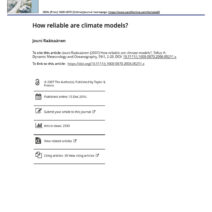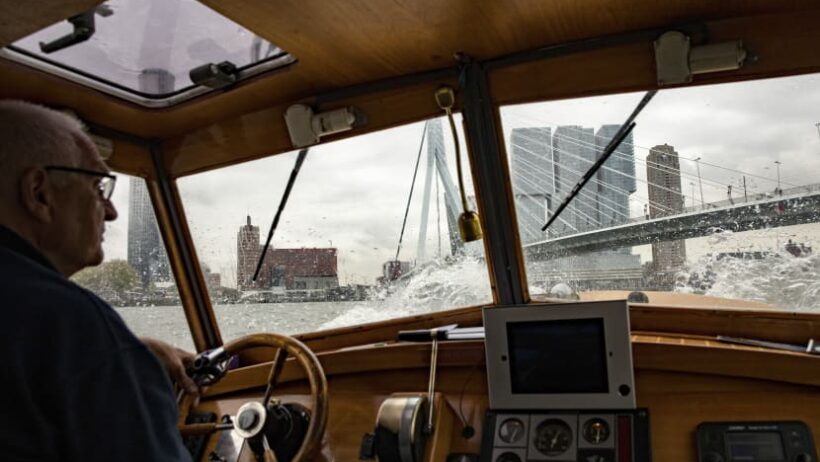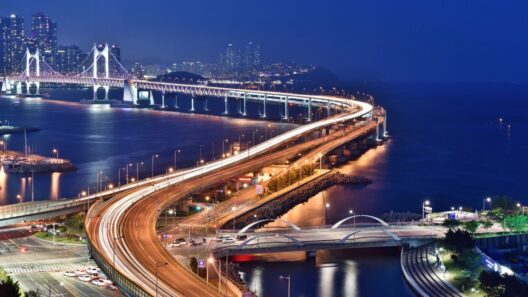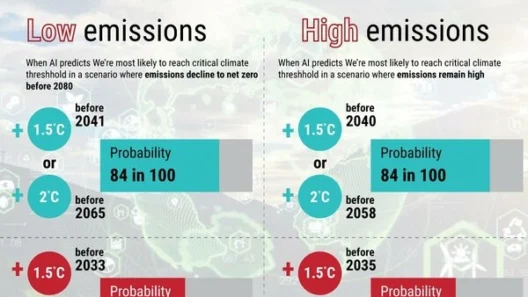As the world grapples with the cauldron of climate change, the Dutch stand resolute, navigating the tumultuous waters of rising sea levels with an array of innovative solutions. Their land, a masterpiece of human ingenuity, offers a compelling narrative of resilience and adaptability, embodying the philosophy that challenges can indeed be transformed into opportunities. The Netherlands, a nation where approximately one-third of its territory lies below sea level, has meticulously crafted a framework of robust defenses to safeguard its future. This exploration of the Dutch response to rising seas illuminates the country’s extraordinary approach, revealing the intricate tapestry of technology, policy, and community engagement.
At the heart of the Netherlands’ water management strategy is a system of dams, dikes, and flood barriers—an intricate assemblage that reflects both functionality and artistry. These quintessential structures are akin to the sentinels of the Dutch landscape, tirelessly working to hold back the encroaching waters of the North Sea. The iconic Afsluitdijk, a massive dam completed in 1932, serves not only as a formidable barrier, but it also facilitates the transformation of the Zuiderzee into the IJsselmeer, a freshwater lake that supports agriculture and biodiversity. This duality—protection and opportunity—is a hallmark of Dutch innovation, exemplifying how foresight can engineer harmony between nature and human necessity.
Furthermore, the Dutch have adopted a philosophy known as “Room for the River,” an innovative paradigm shift that embraces the idea of coexistence with water rather than its mere containment. This principle advocates for giving rivers more space to expand during flooding, thereby mitigating the risk of inundation in densely populated areas. By reshaping landscapes to accommodate the whims of water, the Netherlands exemplifies a profound understanding of nature’s power, inviting it to play a pivotal role in flood management rather than viewing it solely as a threat. Hydrological engineering projects, such as the `Room for the River` initiative, have led to the reconfiguration of riverbanks and the creation of floodplains, promoting biodiversity while enhancing safety.
The integration of advanced technology is yet another facet of the Dutch response. State-of-the-art predictive models and monitoring systems are deployed to anticipate the impacts of climate change and inform decisions on water management. The creation of the Delta Works, an intricate network of dams, sluices, locks, and storm surge barriers, epitomizes this progressive mindset. The Oosterscheldekering, a pivotal component of the Delta Works, stands as a testament to human resolve against nature’s fury, operating with precision to regulate water levels while allowing for the natural movement of marine life. The utilisation of dynamic barriers that respond to changing conditions exemplifies the synthesis of engineering prowess and environmental consciousness in safeguarding the Dutch territory.
The narrative of the Netherlands’ battle against rising seas is also interwoven with community engagement and governance. The ‘Water Management 21’ vision encapsulates a holistic approach, uniting governmental agencies, local municipalities, and citizens in the common goal of resilience. Public awareness campaigns emphasize the importance of preparedness, fostering a collective consciousness that empowers individuals to participate in safeguarding their communities. This communal spirit is vital; it perpetuates the idea that effective climate action transcends policy mandates and resides in the hands of the populace who must adapt to their realities.
Moreover, the Dutch are pioneering in the realm of urban development, showcasing how architecture can be a proactive response to climate challenges. Projects such as floating neighborhoods and amphibious housing are redefining the concept of living with water. These innovative designs are not merely aesthetic; they embody a fundamental shift in how urban areas can function amid rising sea levels. By embracing the fluidity of their environment, the Dutch have opened a dialogue about adaptability that other nations can learn from. Floating structures in cities like Rotterdam not only respond gracefully to changing water levels but also challenge traditional concepts of land use and urban planning.
In the agricultural sector, the Netherlands exemplifies ingenuity through concepts like ‘climate-smart agriculture,’ which emphasizes sustainability in food production amidst fluctuating climatic conditions. Farmers are adopting practices that enhance water retention in soils and optimize irrigation to combat the negative effects of climate change. The nation’s advanced greenhouse systems are a synthesis of efficiency and circular economy principles, ensuring that even as the seas rise, food security remains unthreatened. This multifaceted approach to agriculture illustrates how climate resilience is interlinked with food sovereignty, reinforcing the notion that every sector must play a role in the collective response to climate challenges.
As the water continues to rise globally, the narrative of the Dutch response serves as both a cautionary tale and a beacon of hope. It reminds the world that adaptation and innovation are not mere options but essential pathways toward a sustainable future. Through meticulous engineering, a commitment to community engagement, and a relentless pursuit of ecological harmony, the Netherlands is crafting a model of resilience that resonates beyond its borders. The Dutch experience underscores the idea that facing the tide’s relentless advance can fuel creativity and determination. As climate change continues to rear its formidable head, the lessons learned from this small nation may very well guide others through stormy waters.







